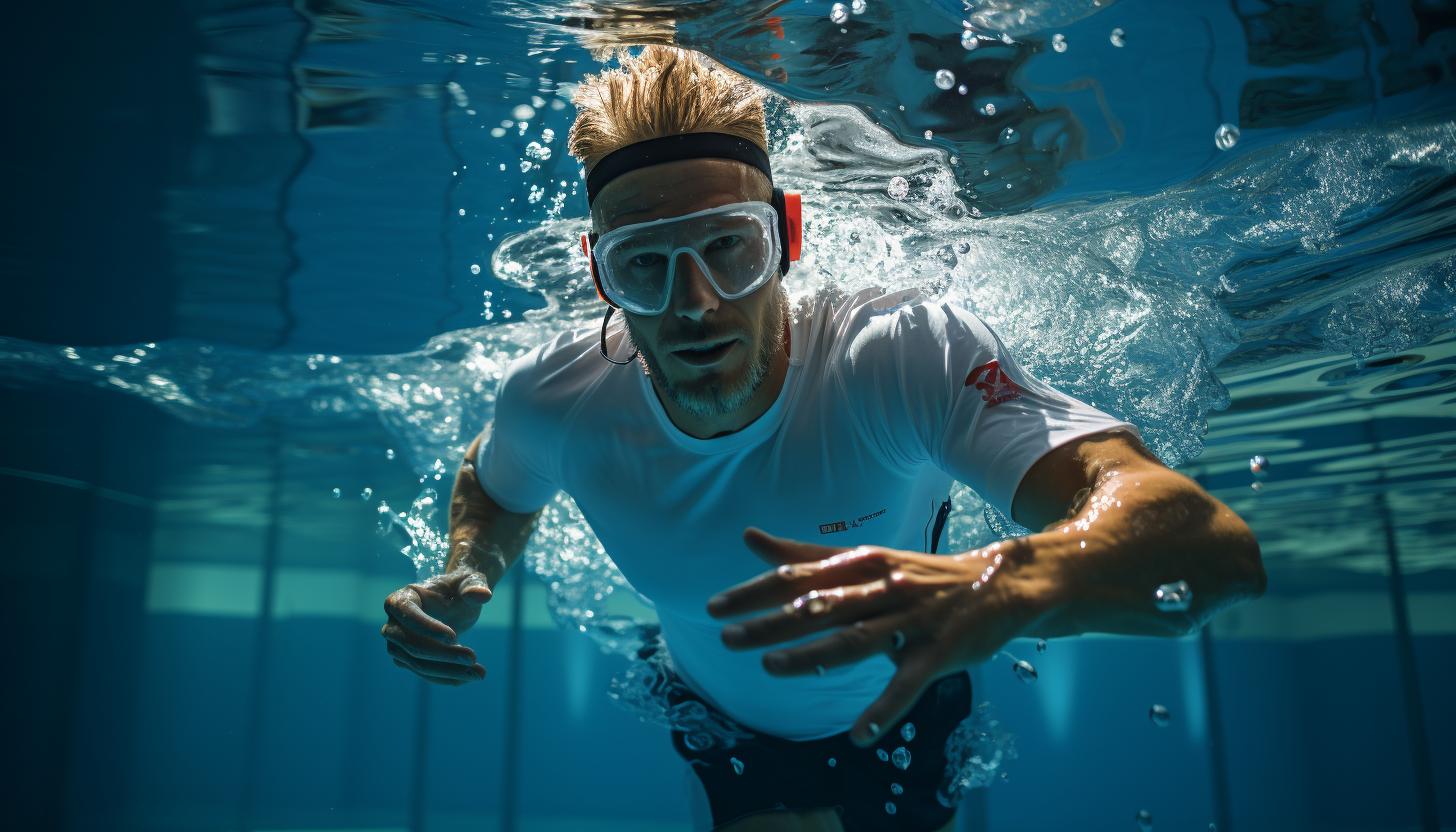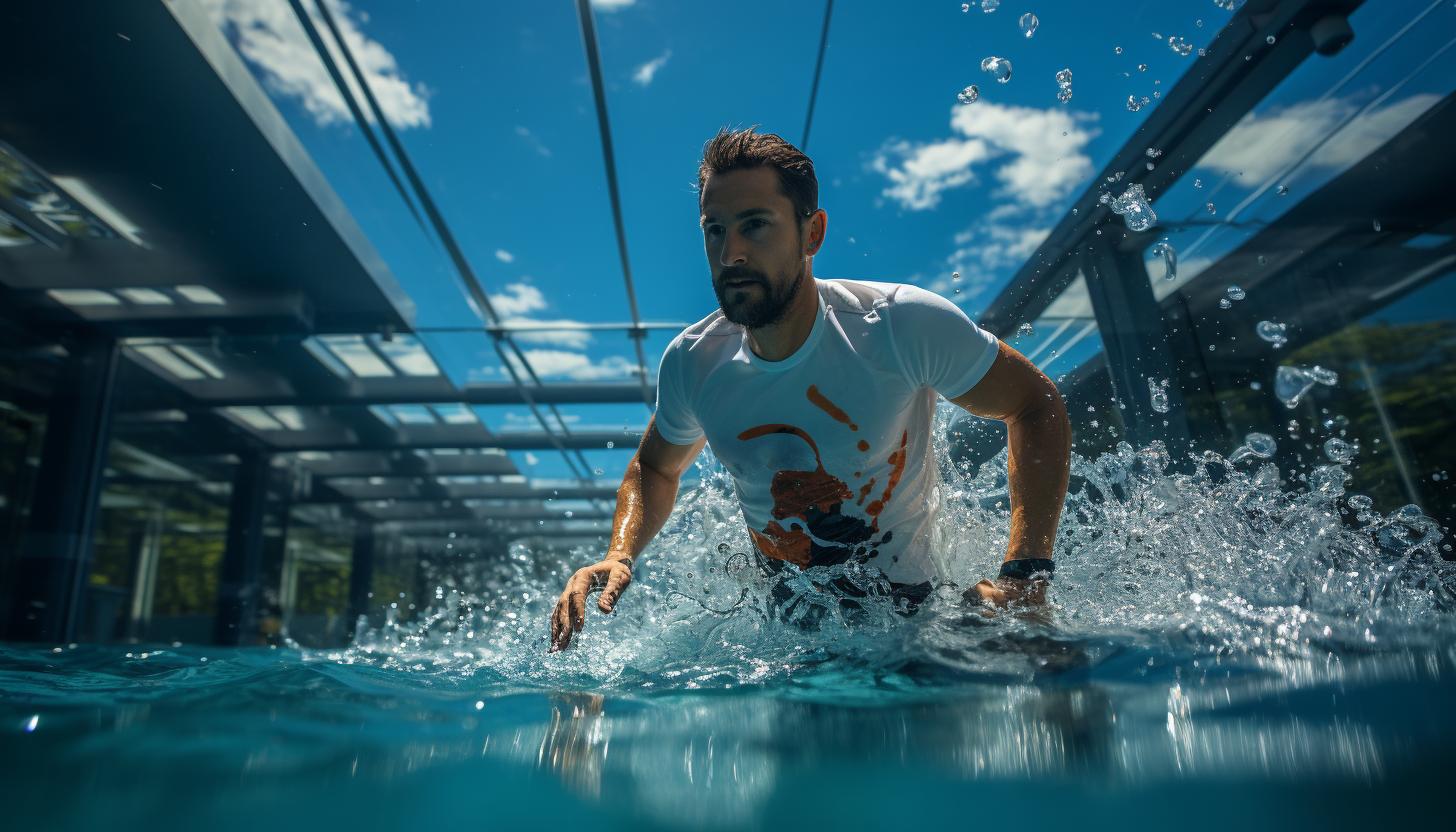The Benefits of Swimming for Runners: Cross Training Tips

Looking to take your running to the next level? Dive into the world of swimming for some serious cross training benefits.
You may be wondering, how can swimming help improve my performance as a runner? Well, get ready to be amazed.
Not only will swimming boost your cardiovascular endurance, but it also provides a low-impact full-body workout that strengthens and stretches your muscles.
And that’s not all – swimming can help prevent injuries and even enhance your mental well-being.
So grab your goggles and dive in!
Improved Cardiovascular Endurance

You’ll notice an increase in your cardiovascular endurance when you start incorporating swimming into your cross training routine. Swimming is a fantastic way to improve your overall fitness and complement your running workouts. One of the key benefits of swimming for runners is the improvement in breathing techniques and increased lung capacity.
When you swim, you have to regulate your breathing effectively to coordinate with your strokes. This requires conscious effort and helps strengthen the muscles responsible for respiration. As you practice swimming regularly, you will become more efficient at taking deep breaths and exhaling fully, which translates into better oxygen intake during running.
In addition to improved breathing techniques, swimming also increases lung capacity. The repetitive nature of swimming forces your lungs to work harder as they adapt to meet the demands of this low-impact exercise. Over time, this leads to a greater volume of air that can be inhaled and exhaled during running, resulting in enhanced endurance.
To maximize the benefits of swimming on cardiovascular endurance, it’s important to incorporate regular swim sessions into your training schedule. Aim for two or three swims per week, gradually increasing the duration and intensity as you progress. Remember to focus on proper breathing techniques and engage in exercises that specifically target respiratory muscles.
Low-Impact Full-Body Workout

To get a low-impact full-body workout, try incorporating swimming into your routine. Swimming is an excellent form of cross-training for runners, providing numerous benefits that can enhance your overall fitness and performance. Here are four reasons why swimming is an ideal workout for runners:
1. Water resistance: The water provides natural resistance to your movements, making every stroke and kick a challenging exercise for your muscles. This helps build strength and endurance without putting excessive stress on your joints.
2. Increased lung capacity: Swimming requires controlled breathing techniques, which can significantly improve your lung capacity over time. As a runner, having strong lungs is essential for maintaining steady oxygen supply during long-distance runs.
3. Full-body engagement: Unlike running, swimming engages all major muscle groups simultaneously. It works your arms, legs, core, and back muscles in a balanced manner, leading to improved overall strength and stability.
4. Low-impact nature: Running can be tough on the joints due to the repetitive impact with each step. Swimming eliminates this impact entirely by providing buoyancy in the water, reducing stress on your joints while still delivering an intense workout.
Enhanced Muscle Strength and Flexibility

By incorporating swimming into your routine, you can improve your muscle strength and flexibility. Swimming is a low-impact exercise that engages all the major muscle groups in your body. The resistance of the water provides a challenging workout that helps to build lean muscle mass and improve overall strength. In addition to building muscle, swimming also increases flexibility by stretching and elongating the muscles as you move through the water.
Here is a table that highlights the benefits of swimming for improved performance and increased range of motion:
| Benefits of Swimming |
|---|
| Improved Performance |
| Increased Range of Motion |
Swimming not only strengthens your muscles but also increases their endurance, allowing you to perform better in other activities such as running. By incorporating regular swimming sessions into your training routine, you can enhance your overall athletic performance.
Furthermore, swimming promotes increased range of motion throughout your joints. The fluid movements required in swimming help to loosen tight muscles and improve joint flexibility. This increased range of motion can translate into better running form and reduce the risk of injuries caused by tight or restricted muscles.
Incorporating swimming into your cross-training routine not only improves muscle strength and flexibility but also enhances overall performance and reduces the risk of injury. Now let’s explore how swimming can aid in injury prevention and rehabilitation.
Injury Prevention and Rehabilitation

Swimming can be a valuable tool for preventing injuries and aiding in rehabilitation due to its low-impact nature and ability to improve joint flexibility. Here are four ways swimming can help you reduce joint stress and increase your range of motion:
1. Low-impact exercise: Unlike running, which puts significant stress on your joints, swimming is a non-weight-bearing activity that allows you to exercise without putting excessive strain on your knees, hips, and ankles.
2. Full-body workout: Swimming engages multiple muscle groups simultaneously, helping to strengthen not only your legs but also your core, arms, and back. This balanced muscular development can help reduce the risk of imbalances or overuse injuries common among runners.
3. Joint mobility: The repetitive movements involved in swimming promote increased range of motion in your joints. By moving through the water with fluidity and resistance, you can improve flexibility in areas such as the shoulders, hips, and ankles.
4. Rehabilitation support: If you’re recovering from an injury or managing chronic joint pain, swimming provides a safe environment for rehabilitation exercises. The buoyancy of water reduces the impact on injured joints while still allowing for controlled movement and strengthening exercises.
Incorporating regular swimming sessions into your training routine can help prevent injuries by reducing joint stress and improving your overall range of motion. So why not dive into this low-impact cross-training option today?
Mental and Emotional Benefits

Regular swimming sessions can provide a much-needed mental and emotional break from daily stressors. When you dive into the water, you leave behind the noise and demands of your everyday life, allowing yourself to focus solely on your swim. This break from stress can lead to improved focus and overall well-being.
Swimming is a low-impact exercise that engages both your mind and body. It requires concentration on proper technique, breathing rhythm, and maintaining buoyancy in the water. This mental engagement helps shift your attention away from stressors, providing relief and relaxation.
In addition to stress relief, swimming can also improve your ability to focus. As you swim laps or engage in water-based exercises, you must stay present in the moment, focusing on each stroke or movement. This practice of mindfulness can carry over into other areas of your life, helping you stay focused on tasks and goals outside of the pool.
To fully understand the mental benefits of swimming for stress relief and improved focus, let’s take a look at how it compares to other popular activities:
| Activity | Stress Relief Rating | Focus Improvement Rating |
| Swimming | 5/5 | 4/5 |
| Running | 3/5 | 3/5 |
| Yoga | 4/5 | 5/5 |
| Cycling | 3/5 | 2/5 |
| Weightlifting | 2/5 | 1/5 |
As shown in the table above, swimming ranks high for both stress relief and improved focus when compared to other activities such as running or cycling. So next time you feel overwhelmed by daily pressures, consider taking a dip in the pool for some much-needed mental rejuvenation.
Conclusion
So there you have it, fellow runners. The benefits of swimming as a cross-training activity are truly remarkable.
Not only does it improve your cardiovascular endurance, but it also provides a low-impact full-body workout that enhances muscle strength and flexibility.
Swimming can even help prevent injuries and aid in rehabilitation if you’re dealing with any running-related issues.
And let’s not forget about the mental and emotional benefits of this refreshing activity.
So why wait? Dive into the pool and unlock a whole new level of fitness and well-being.






